
Castle Geyser erupting at Upper Geyser Basin, Yellowstone National Park / Rebecca Latson
Happy New Year! How were your holidays? Did you get to spend any time in a unit of the National Park System? While I did not, I did however receive some cool national park-centric gifts, including a book from my youngest nephew titled The Art Of The National Parks, by Fifty-Nine Parks. All 63 national parks are listed, and according to the book flap, this publication “ … Is a spectacular collection of original screen-printed posters by leading artists from around the world.” Included with each beautiful poster artwork is the name of the artist, a description of that national park, a quote by a famous personage about that national park (or nature/environment/parks in general), and a few facts. It’s these facts that are weaved into this month’s quiz questions and trivia, along with the usual information gleaned from NPS Instagram and Facebook posts. So, get ready to test your knowledge and see just how much you know. I guarantee you will learn something new.
1. True of False: early explorers used to launder their clothing in Castle Geyser at Upper Geyser Basin in Yellowstone National Park.
a) True
b) False

Caver maneuvering a vertical passage, Jewel Cave National Monument / NPS file
2. Some caves, like Jewel Cave National Monument in South Dakota, have narrow vertical passageways which a caver maneuvers using a common method known as ___.
a) Tunneling
b) Chimneying
c) Smokestacking
d) Sweeping

Bull elk, Wind Cave National Park / NPS-Mike Laycock; Bighorn ram, Yellowstone National Park / NPS-Diane Renkin
3. A hike through Glacier, Yellowstone, or Rocky Mountain national parks might allow you to view amazing wildlife like elk, moose, mule deer, or bighorn sheep. True or False: antlers and horns are the same thing and used interchangeably to identify those things growing out of the wildlife’s head.
a) True
b) False
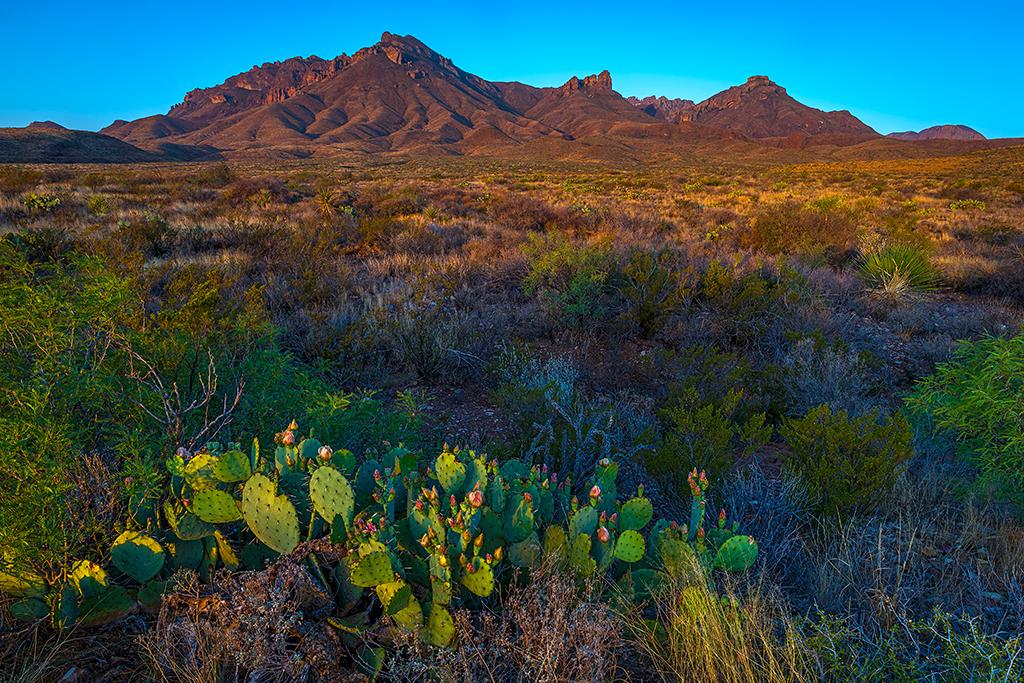
Sunrise over the Chihuahuan Desert and Chisos Mountains, Big Bend National Park / Rebecca Latson
4. True or False: The Chisos Mountain Range of Big Bend National Park in Texas is the only mountain range housed completely within a national park.
a) True
b) False

Night sky over Isle Royale National Park / NPS-Jacob W. Frank
5. True or False: Isle Royale in Michigan is the largest island in the contiguous United States.
a) True
b) False
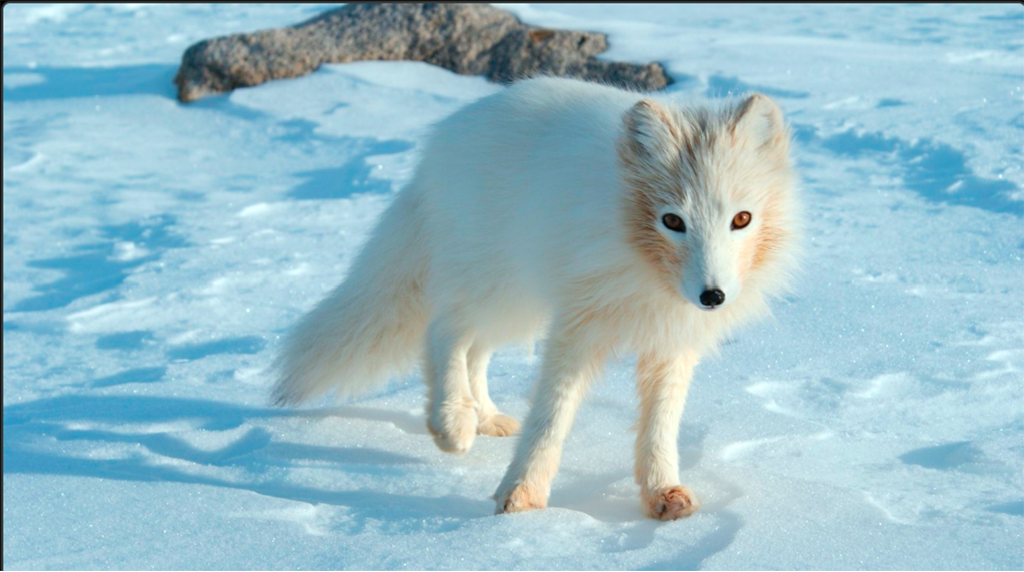
Arctic fox, Kobuk Valley National Park / publicdomainphotosnet - Jean Beaufort via NPS
6. Ever visit Kobuk Valley National Park in Alaska in the winter? If so, did you see an Arctic fox (qusrhaaq) just standing in the snow and ice, watching you back? Animals can stand in snow and ice without freezing due to ___.
a) Natural antifreeze in the bloodstream
b) Extra-thick fur on the footpads
c) High metabolism
d) Counter-current heat exchange
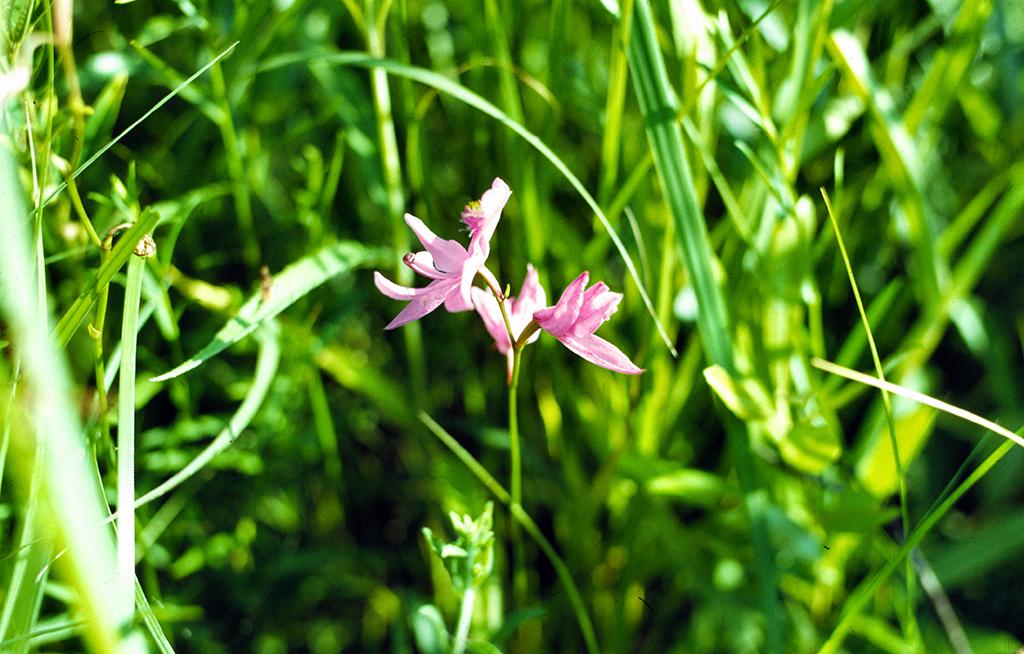
Moss-pink orchid, Indiana Dunes National Park / NPS file
7. True or False: Indiana Dunes National Park in Indiana has more native orchid species than the state of Hawaii.
a) True
b) False

Little Cinnamon Beach, Virgin Islands National Park /Anne Finney via NPS
8. Who coined the name “Virgin Islands”, where Virgin Islands National Park is located?
a) Ponce de Leon
b) Christopher Columbus
c) Ferdinand Magellan
d) Sir Francis Drake
9. Cuyahoga Valley National Park in Ohio is home to 250 bird species, 41 species of mammals, 43 species of fish, and ___ reptile species.
a) 10
b) 20
c) 30
d) 40
10. True or False: mules are used to deliver mail to people living in the inner canyon area of Grand Canyon National Park in Arizona.
a) True
b) False
Trivia

Fossil frog, Fossil Butte National Monument / NPS file
How many of you have visited Fossil Butte National Monument in Wyoming? Considered “America’s aquarium in stone,” you’ll have seen some of the world’s best-preserved fossils. According to the NPS, “The fossils found here once lived in and around a large freshwater lake 52-million-years ago in the early Eocene epoch.” However, you won’t see many amphibians from Fossil Lake. Why? Because “amphibians can only live in waters that have a pH between 3-9, [and] to breed in water the pH needs to be between 3.5 – 5 … [Fossil Lake] was alkaline,” meaning the pH was 8 and above. The frog Aerugoamnis Paulus and the salamander Paleoamphiuma tetradactylum are each only one of two fossils ever found in Fossil Lake.
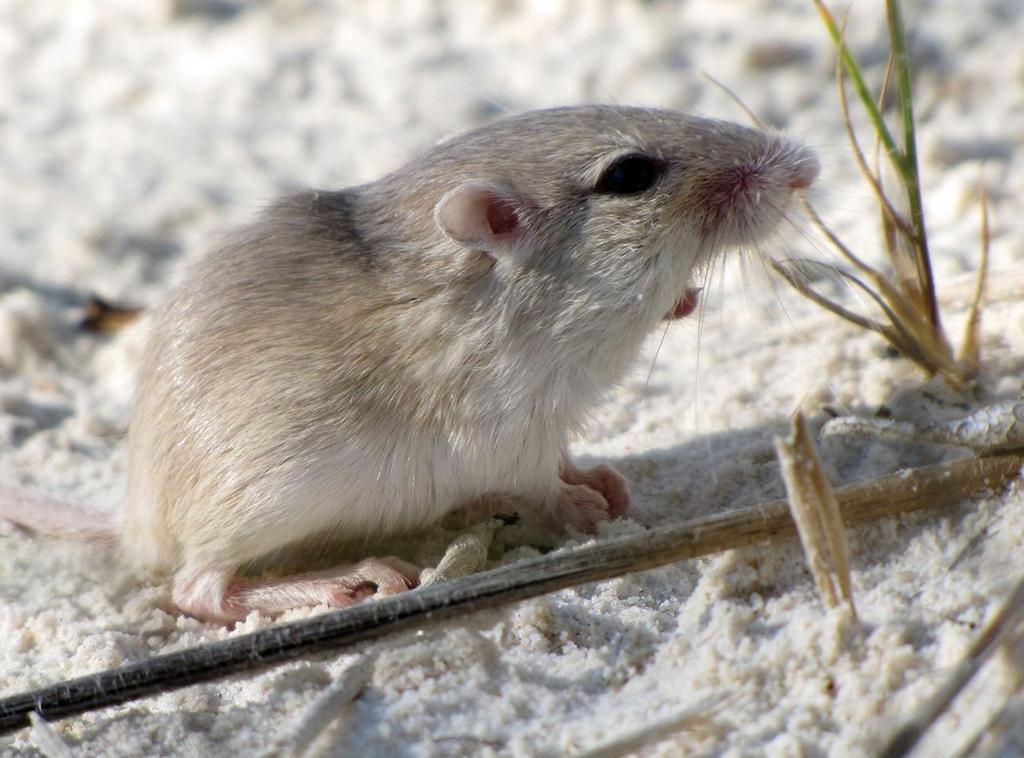
Apache pocket mouse, White Sands National Park / NPS file
This little Apache pocket mouse (Perognathus flavescens Apachii) is awfully cute, don’t you think? You might see one while wandering around White Sands National Park in New Mexico. To protect themselves from predators, these little mice have evolved to blend in. “Over many generations, darkly colored mice have been picked off,” leaving lighter colored mice living in the dunes. These lighter colored mice have passed on their genes and are great examples of natural selection “showing how animals evolved and changed over time.”
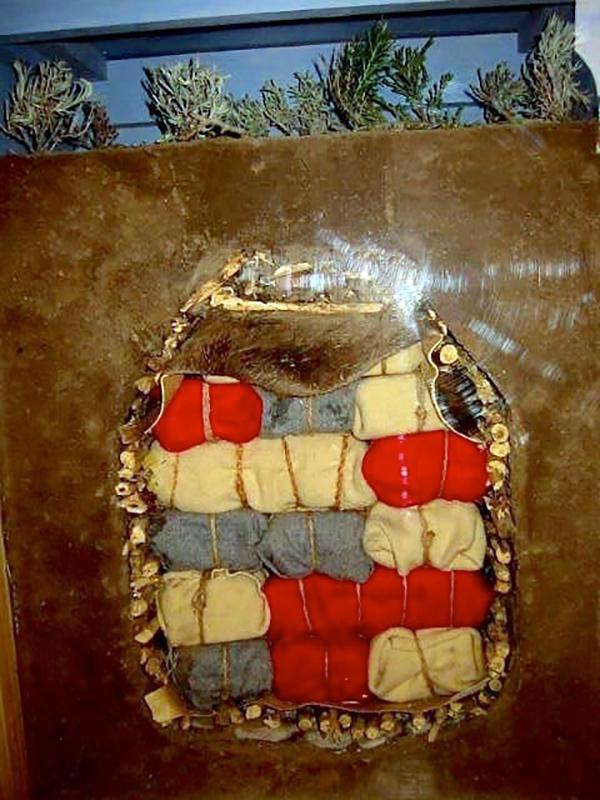
Cross section exhibit of a buried cache example, Louis and Clark National Historic Trail / NPS via Facebook
There were four known cache (storage) sites along the route of what is now the Lewis and Clark National Historic Trail, where Lewis and Clark’s Corps of Discovery placed goods and supplies to retrieve during their return journey from the Pacific Northwest. The first cache was “east of the Continental Divide in the vicinity of the confluence of the Marias River and the Missouri … The second cache site was near the lower portage camp where the white pirogue was hidden in the willows below the Great Falls and Lewis’ desk, some books, specimen of plants and minerals, kegs of pork, more ammunition, flour, two blunderbusses, and various personal items were placed in a pit … The third cache was created near the Beaverhead River and site of Camp Fortunate … The final small cache was created in early October 1805, when camping with the Nez Perce people near the Clearwater River … Items in good or salvageable condition were collected in the white pirogue or canoes and continued downstream with the Corps. Damaged goods were left behind and quickly decayed or were likely collected by local Native peoples.”
Quiz Answers
1b False
“Early explorers used Old Faithful to launder their clothing, but only regular loads. Delicates like wool would have been torn to shreds by the geyser.”
2b
“Chimneying is a common maneuver used to travel through the cave, both horizontally and vertically. The typical technique of traveling through a chimney features a caver’s feet on one wall and their b acks on the other; however, there are variations. Positioned as such, cavers are able to shimmy across and up or down passageways that would otherwise be impossible to travel through.”
3b False
According to the NPS, “… antlers and horns are actually two completely different structures … Antlers are grown by animals that are within the deer family (Cervidae), such as mule deer, elk, and moose, and they are most commonly found on the male of the species … growing from a permanent pedestal in the skull of the cervid.” Antlers are exterior bone and after a few months are shed. “True horns, on the other hand, are only found within the Bovidae (cloven-foot, ruminants) family and the Antilocapridae (Pronghorn) family. Horns grow continuously and are commonly found in both the males and females of the species; however, males tend to have the larger [more] showy horns than females. Rather than bone, horns are made out of keratin, the same fibrous proteins our hair and fingernails are made of.”
4a True
According to the NPS, Big Bend National Park “protects the largest and most representative example of the Chihuahuan Desert ecosystem in the United States, which includes the Chisos Mountains— the only mountain range fully contained within a U.S. national park.”
5b False
Isle Royale is the third-largest island in the contiguous United States, behind Padre Island, Texas, and Long Island, New York.
6d
“…Marine mammals, birds, and terrestrial mammals living in extreme cold temperatures have different layouts of veins and arteries than those in warmer climates. The arteries run in close contact with veins so that the extremities can efficiently regulate heat.” This is known as counter-current heat exchange. In the case of the Arctic fox, “… the paws are maintained near freezing temperatures by a network of overlapping veins and arteries near the foot pad. The paw never gets too cold or too warm thanks to the vein structure. This allows the Arctic fox to stand in snow and ice with temperatures below -40o Fahrenheit.”
7a True
According to the NPS, Indiana Dunes National Park has 28 species of orchids – more native species than the state of Hawaii.
8b
Christopher Columbus named this cluster of islands between the Caribbean Sea and North Atlantic Ocean after the Roman Catholic Saint Ursula and the 11,000 virgins who followed her.
9b
There are 20 species of reptiles living in Cuyahoga Valley National Park: 11 snake species, eight turtle species, and one skink species.
10a True
In addition to Phantom Ranch, the U.S. Postal Service delivers mail by mule to Supai Village on the Havasupai Reservation.


